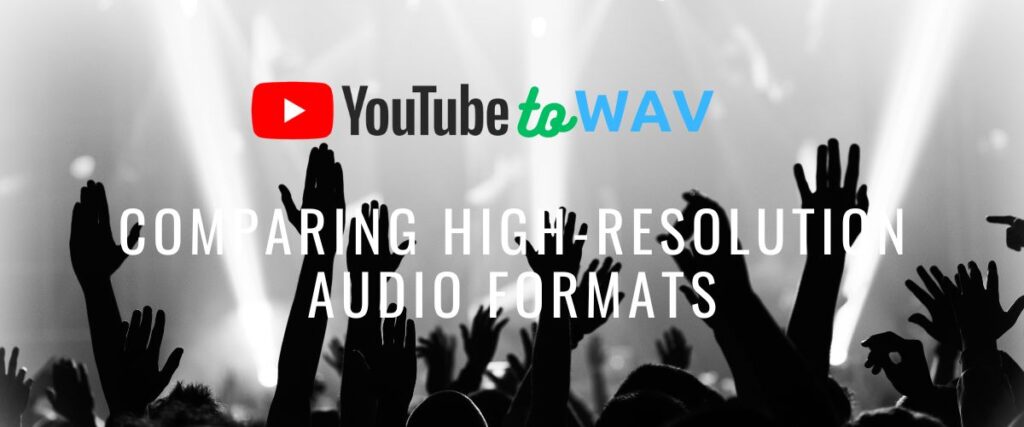Comparing High-Resolution Audio Formats may determine which reigns supreme.
Understanding High-resolution Audio
High-resolution audio is a term that is gaining traction in the world of music lovers and audiophiles alike. But what exactly does it mean? High-resolution audio refers to audio files that are of higher quality and offer more detail and clarity than standard audio formats. These files are typically encoded at a higher bit rate and sample rate, resulting in a more accurate representation of the original recording.
The benefits of high-resolution audio are numerous. By capturing more information and subtleties in the music, high-resolution audio can provide a more immersive and realistic listening experience. It allows listeners to hear instruments and vocals with greater precision and clarity, making the music feel more alive. High-resolution audio also preserves the dynamic range of the original recording, ensuring that no detail is lost in the mix.
As technology continues to advance, the popularity of high-resolution audio formats is steadily growing. With more and more music enthusiasts seeking a higher quality listening experience, musicians and record labels are embracing high-resolution audio as a way to connect with their audience on a deeper level. From lossless formats like FLAC to uncompressed formats like WAV and AIFF, there are now a variety of options available for those who want to enjoy their favorite music in the highest possible quality.
Popular High-resolution Audio Formats
Discovering the best high-resolution audio format can be challenging. Uncover the reigning champion among popular formats and elevate your audio experience.
Flac (free Lossless Audio Codec)
FLAC is a popular high-resolution audio format known for its features and advantages. It offers lossless compression, ensuring the original audio quality is preserved without any data loss. FLAC is compatible with various devices and platforms, making it a versatile option for music enthusiasts. When compared to other high-resolution audio formats, FLAC stands out for its efficiency in compressing audio files without compromising quality.
Alac (apple Lossless Audio Codec)
ALAC, short for Apple Lossless Audio Codec, is an audio format specifically designed for Apple devices and software. Similar to FLAC, ALAC also provides lossless compression, allowing users to enjoy high-quality audio. While it shares similarities with FLAC, ALAC is exclusive to Apple’s ecosystem. This means it may be the preferred choice for individuals using Apple devices and software, as it ensures seamless compatibility and integration.
Dsd (direct Stream Digital)
DSD, or Direct Stream Digital, is an alternative high-resolution audio format with unique characteristics. Unlike FLAC and ALAC, DSD operates on a different principle called pulse-density modulation. It offers a distinctive sound signature and is highly regarded by audiophiles for its natural, analog-like audio reproduction. When comparing DSD to FLAC and ALAC, it’s important to consider personal preferences and the specific audio playback system being used.
WAV (Waveform Audio File Format)
A subset of IBM and Microsoft’s Resource Interchange File Format (RIFF) dedicated for storing digital audio files is called WAV also known as WAVE (Waveform Audio File Format).
| Audio Format | Features | Compatibility | Comparison |
|---|---|---|---|
| FLAC | Lossless compression | Wide compatibility | Efficiency in compression |
| ALAC | Lossless compression | Exclusive to Apple devices | Seamless integration |
| DSD | Unique sound characteristics | Varies depending on playback system | Preference-based |
| WAV | Uncompressed lossless | Playable on Apple and Android devices | Easy to control |

Technical Considerations For High-resolution Audio Formats
Title: Comparing High-Resolution Audio Formats: Which One Reigns Supreme?
Bit depth refers to the number of bits that can be used to represent each sample in a digital audio file. Higher bit depths allow for greater dynamic range and accuracy in capturing audio. Sample rate, on the other hand, determines the number of samples taken per second. Higher sample rates capture more detail and result in a more accurate representation of the original sound wave.
Compression algorithms are used to reduce file sizes of audio formats. Lossless compression retains all the original audio data, while lossy compression discards some data to achieve higher compression. Different compression algorithms can affect audio quality differently, with some causing noticeable loss in audio fidelity.
High-resolution audio files can be large in size. Estimating the storage space needed for these files is crucial, especially when building a high-resolution audio library. Effective management of storage is essential to ensure easy access to the files while optimizing storage capacity.
Listening Experience And Subjective Comparisons
Listening experience and subjective comparisons play a crucial role in evaluating high-resolution audio formats. The quality of audio equipment can significantly impact the perception and enjoyment of these formats. When conducting blind listening tests, it is essential to eliminate any bias that may arise from visual cues and focus solely on the audio experience. By removing preconceived notions about the formats being compared, listeners can provide more objective feedback.
Subjective impressions of different high-resolution audio formats differ from person to person. Some may prefer the warmth and richness of certain formats, while others may value the clarity and detail provided by alternative options. Factors such as individual hearing capabilities, personal preferences, and familiarity with specific formats can influence these subjective impressions. Therefore, it is crucial to consider a wide range of perspectives when evaluating and comparing high-resolution audio formats.
FAQs on Comparing High-Resolution Audio Formats
What are high-resolution audio formats?
High-resolution audio formats are digital audio formats that offer higher quality sound reproduction compared to standard audio formats. These formats capture and reproduce more details and nuances in the music, resulting in a more immersive listening experience.
Which high-resolution audio formats are commonly used?
Some commonly used high-resolution audio formats include FLAC (Free Lossless Audio Codec), ALAC (Apple Lossless Audio Codec), WAV (Waveform Audio File Format), and DSD (Direct Stream Digital).
How do these high-resolution audio formats differ?
The main difference between these formats lies in their compression methods and supported resolutions. FLAC and ALAC use lossless compression, meaning they retain all the original audio data without sacrificing quality. WAV, on the other hand, is an uncompressed format. DSD is a format specifically designed for SACD (Super Audio CD) playback and uses a different encoding method.
Which high-resolution audio format is the best?
The “best” high-resolution audio format ultimately depends on personal preferences and the playback equipment being used. FLAC and ALAC are widely supported and offer excellent sound quality. WAV provides uncompressed audio but results in larger file sizes. DSD is favored by audiophiles for its unique sound characteristics, but it requires specialized hardware for playback.
Can high-resolution audio formats be played on any device?
Most modern devices, including smartphones, computers, and dedicated audio players, can play high-resolution audio formats. However, it is essential to check device specifications and compatibility before assuming support for specific formats. Additionally, some devices may require the installation of additional software or apps to play certain formats.
Conclusion
The world of high-resolution audio formats offers a myriad of options, each with its own unique characteristics and benefits. Whether it’s the lossless compression of FLAC, the high-quality streaming of MQA, the detailed audio of DSD, or Uncompressed audio of WAV, there’s an option for every discerning listener.
Ultimately, the choice of which format reigns supreme depends on personal preference, the audio equipment used, and the listening environment. So, explore, experiment, and immerse yourself in the captivating world of high-resolution audio to find the format that resonates with you.

